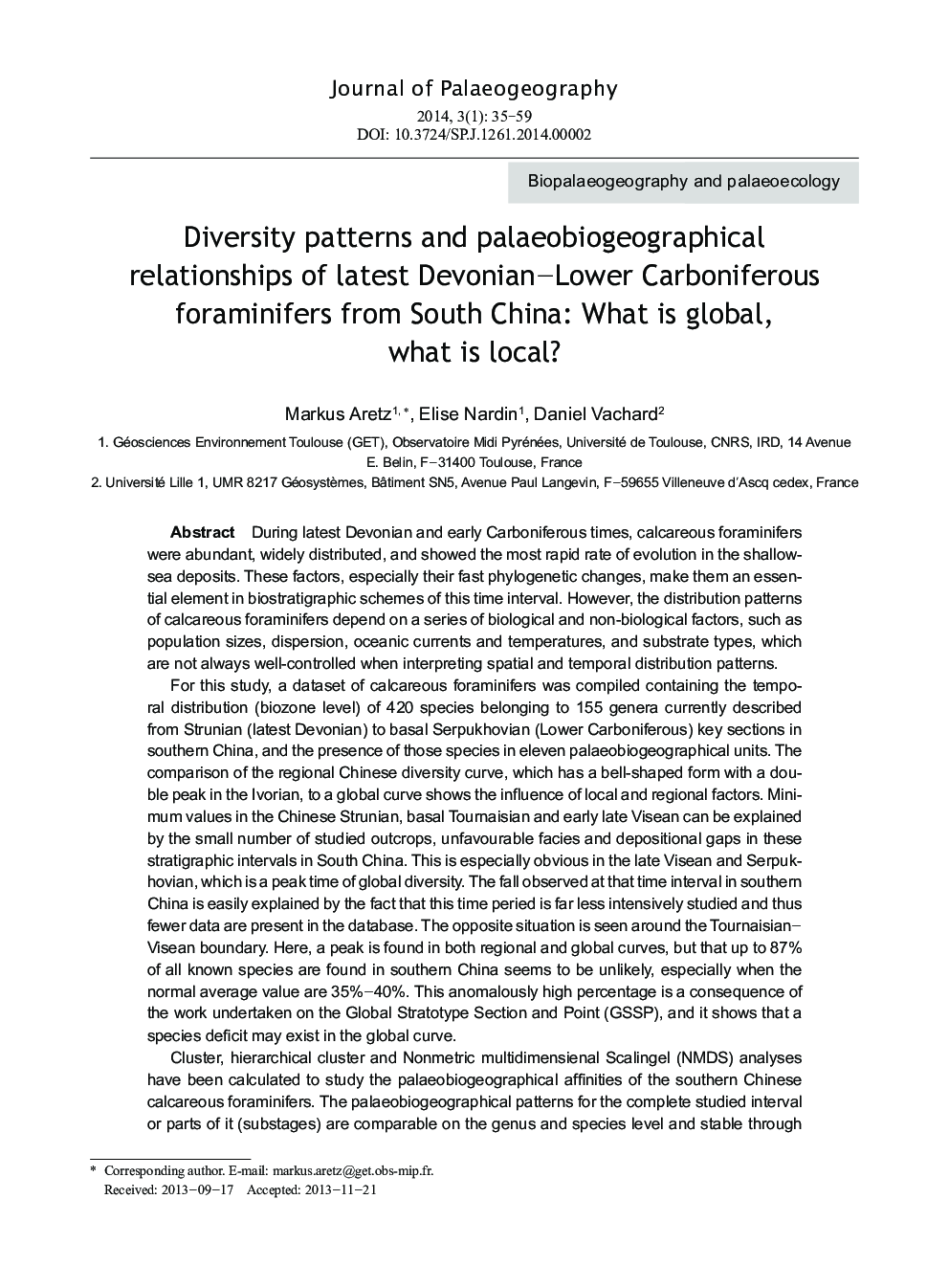| کد مقاله | کد نشریه | سال انتشار | مقاله انگلیسی | نسخه تمام متن |
|---|---|---|---|---|
| 4581041 | 1333676 | 2014 | 25 صفحه PDF | دانلود رایگان |

During latest Devonian and early Carboniferous times, calcareous foraminifers were abundant, widely distributed, and showed the most rapid rate of evolution in the shallow-sea deposits. These factors, especially their fast phylogenetic changes, make them an essential element in biostratigraphic schemes of this time interval. However, the distribution patterns of calcareous foraminifers depend on a series of biological and non-biological factors, such as population sizes, dispersion, oceanic currents and temperatures, and substrate types, which are not always well-controlled when interpreting spatial and temporal distribution patterns.For this study, a dataset of calcareous foraminifers was compiled containing the temporal distribution (biozone level) of 420 species belonging to 155 genera currently described from Strunian (latest Devonian) to basal Serpukhovian (Lower Carboniferous) key sections in southern China, and the presence of those species in eleven palaeobiogeographical units. The comparison of the regional Chinese diversity curve, which has a bell-shaped form with a double peak in the Ivorian, to a global curve shows the influence of local and regional factors. Minimum values in the Chinese Strunian, basal Tournaisian and early late Visean can be explained by the small number of studied outcrops, unfavourable facies and depositional gaps in these stratigraphic intervals in South China. This is especially obvious in the late Visean and Serpukhovian, which is a peak time of global diversity. The fall observed at that time interval in southern China is easily explained by the fact that this time peried is far less intensively studied and thus fewer data are present in the database. The opposite situation is seen around the Tournaisian–Visean boundary. Here, a peak is found in both regional and global curves, but that up to 87% of all known species are found in southern China seems to be unlikely, especially when the normal average value are 35%–40%. This anomalously high percentage is a consequence of the work undertaken on the Global Stratotype Section and Point (GSSP), and it shows that a species deficit may exist in the global curve.Cluster, hierarchical cluster and Nonmetric multidimensienal Scalingel (NMDS) analyses have been calculated to study the palaeobiogeographical affinities of the southern Chinese calcareous foraminifers. The palaeobiogeographical patterns for the complete studied interval or parts of it (substages) are comparable on the genus and species level and stable through time. The assemblages found in southern China are well connected to other palaeo(bio)geographical entities supporting the idea of relatively abundant widespread and cosmopolitan taxa in the studied interval. A cluster of South China, Europe and the Russian Platform is found in all analyses. This cluster often attached to the units Far-East Russia and Turkey represents the northern Palaeotethyan Realm. The relatively close affinities between South China and North America cannot be well discussed yet. Chinese data for endemicity, geographical spread and biodiversity in the Tournaisian–Visean boundary interval can be roughly correlated to 3rd-order sea-level fluctuations. Migration patterns into and out of South China can only be suspected, but not yet quantified.
Journal: Journal of Palaeogeography - Volume 3, Issue 1, January 2014, Pages 35–59